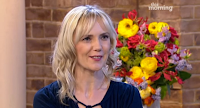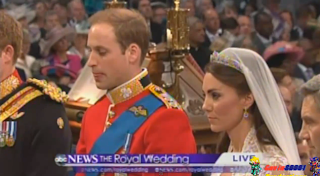The Week Before Production
In the week between our pre-production starting and the actual production itself, we worked really well as a team and we were able to ensure we would be fully prep'd for the day.
The Friday before the production Tuesday, I sent out a message on Facebook to everyone who was cast for our show informing them that each of their individual scripts had been e-mailed to their college e-mails.
I found this a really useful way of communicating as:
a) It was easily accesible (mobile and PC based)
b) Immediately available (most people receive message notifications)
c) It also showed to me who had read the message - as you can see above it says "Seen by everyone". Therefore it prevented the typical excuse of "I didn't get a message?".
Myself, Joe and Alice also came in the day before the production, to do any final exporting of VT's and we were also able to save our Auto-Cue in the compatible format. This worked really well for our team as it meant that we could have all of Alun's attention and help in areas we might not have been too sure in.
I feel this also worked really well to our advantage, as it ensured we had the chance to set up the TV studio exactly how we wanted it, without the feeling of it all being 'rushed', whilst other groups were still finishing off pre-production.
The main lesson learnt from all of this pre-production was that planning ahead is key! Also by getting everything completed before the day, released any pressure we may have been presented with on the day.
The Day Of Production
As we had completed all of our pre-production ahead of schedule, we had free time to go down and put our floor plan into practise. We set up our cameras exactly how we wanted them.
We decided to use all three cameras and to keep them all static throughout. I feel this proved to be a good decision for the group, as it didn't overload the director and vision mixer's worries as to when they could and couldn't cut between cameras.
My Role As Producer
First off, I have learnt how much pressure and responsibility lies with the producer and how many things are accountable by the producer and the director. I have also learnt how closely the two producer and director need to work for the production to run smoothly.
As the day progressed I ensured that I took notes and had a separate copy of the running order to annotate for each run through we did. This worked well as it ensured that I didn't get confused by previous notes and could then refer back to how previous rehearsals went.
One thing I felt might not have gone as smoothly initially was our plans for how we were going to set our audio up in the studio. This was something Connor was responsible for as sound supervisor, but on the day he didn't seem too sure on what the plans were. However we decided on which layout would work best as a team and decided to use a desk mic set-up. I feel this is something we will now remember to do when it comes to the final task.
On our first rehearsal, I felt a little nervous with the timings and how well they would work. I think by us rehearsing our script as a group the week before worked to an advantage and kept us quite on track.
I noticed the timings throughout the production fell short in the final recording and we were rushing through the points. This fell down to the presenter we had, not reading from the auto-cue fully and missing out parts of the script. Next time I would ensure that we had a run through with the presenter and made sure that they felt 100% confident with everything they were being asked to say.
Throughout the first two rehearsals I also noticed myself paying too much attention to what was being broadcast at the time. It really did make my job easier by keeping my head down and focussing purely on time and not worrying myself with what was on screen. I think that is something I can put purely down to new experience and now being able to learn from it.
By the final run through, I felt quite confident with multi-tasking the stop watch, whilst reading the running order and shouting out timings. Overall I feel that due to all of the preparation our team put into our production really paid off and that we did quite well for a first attempt.




































